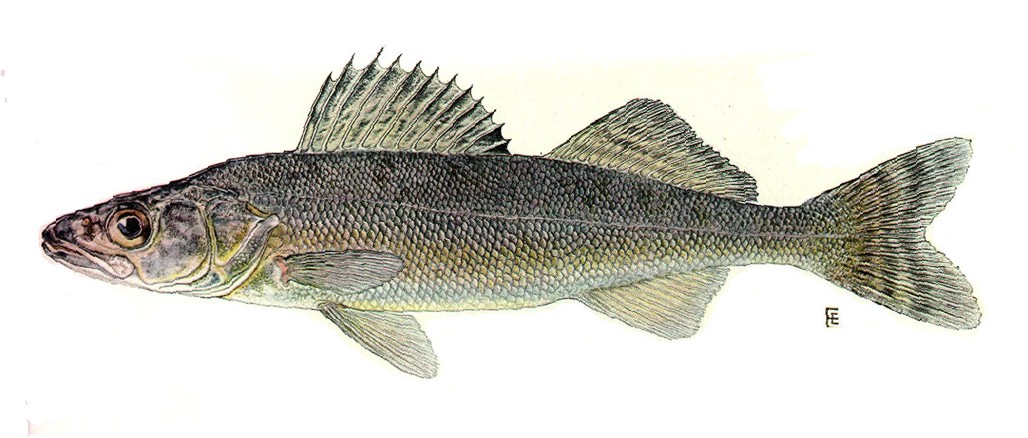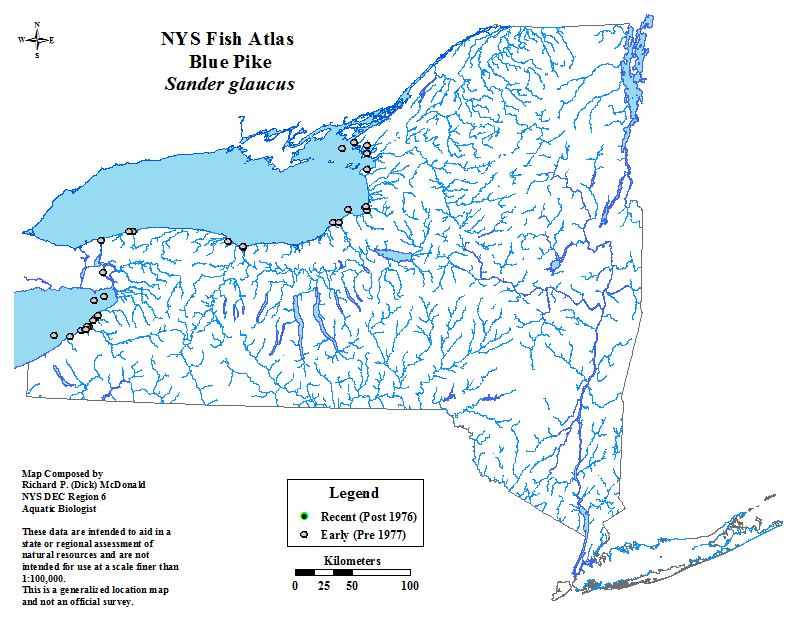
Blue Pike (Sander vitreum glaucum)
The Blue Pike is a subspecies of the Walleye
Walleyes are widely distributed in New York State in suitable habitat. They are found in approximately 75 lakes and many large rivers. Walleyes, also called walleyed pike, are the largest members of the perch family, sometimes reaching a length over 2 feet and a weight approaching 20 pounds. Their diet is primarily other fish.
Walleyes prefer large lakes with considerable areas of deep water and large rivers, with cold to moderately warm water temperatures the most favorable. As the surface water approaches 72°F, they slowly retreat to deeper and cooler waters.
Walleyes spawn soon after ice-out when the water temperature is about 45°-50°F. Females move into the spawning area-a stream, shallow area, or shoal-where the males have already congregated. Usually, the spawning area is a location with 1 to 5 feet of clear water in some type of current. The female is attended by several males as they swim over the spawning area, simultaneously emitting eggs and milt as they go. Fertilized eggs fall among the gravel and rocks on the bottom which provide some protection. No parental care is given to either eggs or young.
The walleye is considered by some to be the state's top sport fish. and most agree it is unexcelled as a foodfish.
Distribution of the blue pike in NY state.
An image of the blue pike is also available for download.
